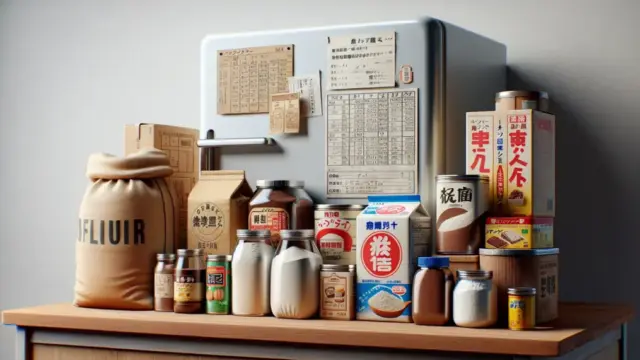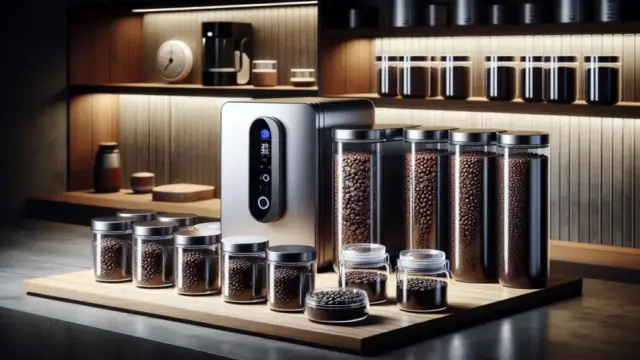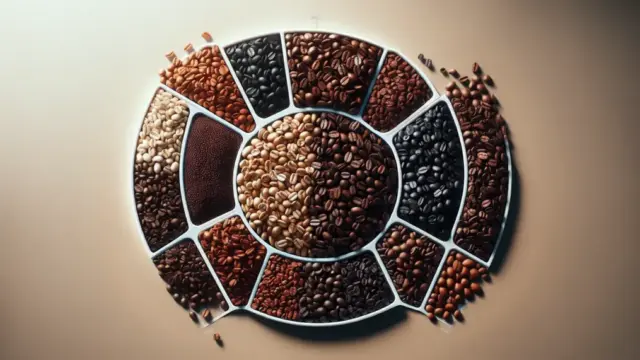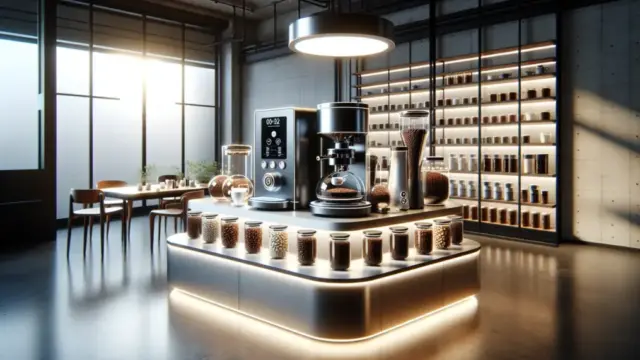Light roast coffee has captivated many coffee enthusiasts with its unique flavors and aromas. Known for its mild bitterness and refreshing, fruity taste, this delightful brew offers a different experience compared to darker roasts. To fully enjoy this charming coffee, it’s essential to understand how to choose, brew, and store it properly. Whether you’re a novice or a seasoned connoisseur, let’s dive deep into the world of light roast coffee.
In this article, we’ll cover everything from the basics of light roast coffee to key selection tips, brewing techniques, and storage methods. By the end, you’ll be well-equipped to enjoy the light roast coffee that suits your palate perfectly. So, stick around!
- Learn about the characteristics and history of light roast coffee
- Understand the types of beans and how to choose them
- Discover brewing techniques and storage tips to enhance flavor
What is Light Roast Coffee? Its Characteristics and Appeal
Light roast coffee is made from beans that are roasted just enough to preserve their unique flavors and aromas. This beloved coffee style offers a taste experience that varies significantly with the degree of roasting. Typically, light roasts are characterized by their fruity notes and noticeable acidity, which highlight the coffee’s inherent flavors, making them a favorite among coffee enthusiasts. Let’s explore the definition of light roast coffee, its history, and its delightful flavors and aromas.
Definition and History of Light Roast Coffee
Light roast refers to coffee beans that have been roasted for a shorter duration, resulting in a light brown color. This roasting method has recently gained popularity as it maximizes the coffee’s original flavor profile. Additionally, light roast coffee holds a significant place in coffee history, especially as the appreciation for specialty coffee has grown.
The history of light roast coffee has evolved alongside the global spread of coffee. In cultures that prioritize acidity and aroma, light roast coffees tend to be preferred. With this background, light roast coffee has garnered a dedicated following around the world.
- Light roast involves coffee beans roasted for a shorter time.
- It brings out the coffee’s original flavors.
- Its popularity as a specialty coffee continues to rise.
Flavors and Aromas of Light Roast Coffee
The biggest appeal of light roast coffee lies in its fruity and refreshing flavors. With a lighter roast, the natural acidity and fruity notes inherent in the beans are highlighted, giving the drinker a fresh impression. For instance, you might often detect hints of berry or citrus, which are part of the joy of drinking light roast coffee.
Moreover, light roast coffee is rich in aroma. The lighter roasting process tends to tone down the roasted notes, allowing floral aromas and grassy scents to shine through. This means that every sip can offer a different flavor and aroma experience, a hallmark of light roast coffee.

If you’re intrigued by this article, you might also enjoy our piece on “Mastering the Acidity of Coffee Beans! A Beginner’s Guide to Choosing and Roasting.” This article provides detailed insights into selecting coffee beans, roasting methods, and the characteristics of acidity, enhancing your appreciation for light roast coffee even further.
- Fruity and refreshing flavors.
- Natural acidity of the beans is emphasized.
- Enjoy floral aromas and grassy scents.
How to Choose Light Roast Coffee
When it comes to enjoying light roast coffee, selecting the right beans is crucial. The type of bean and its origin can significantly influence the flavor and aroma of your coffee. By understanding what kinds of beans suit your taste, as well as the key points and considerations to keep in mind while selecting, you can elevate your coffee experience. Let’s delve into how to choose light roast coffee.
The Importance of Bean Type and Origin
The first step in selecting light roast coffee is to pay attention to the type of bean and its origin. Coffee beans come in various types, such as Arabica and Robusta, but Arabica beans, in particular, are known for their fruity flavor and acidity, making them ideal for light roasting. Additionally, the origin of the coffee affects its flavor profile. For instance, Ethiopian beans are celebrated for their floral aroma and bright acidity, which beautifully enhance the characteristics of light roast coffee.
When choosing coffee from a particular region, consider how the climate and soil of that area influence the flavor of the beans. By familiarizing yourself with the unique characteristics of different regions, you’ll find it easier to discover beans that align with your preferences.
- Arabica beans are fruity and ideal for light roast.
- Flavor varies by origin.
- Ethiopian beans offer delightful floral aromas.
Key Points and Considerations When Choosing
There are several important factors to keep in mind when selecting light roast coffee. First and foremost, it’s essential to choose beans with a recent roast date. Coffee tends to lose its freshness quickly after roasting, so opt for the freshest beans available. It’s also important to check the roast level; choosing beans labeled as “light roast” will ensure you enjoy the intended flavors.
If possible, take advantage of tasting opportunities. Sampling can help you discover flavors and aromas that resonate with your palate. Additionally, purchasing from reputable roasteries or specialty shops will ensure you receive high-quality beans.
- Choose beans with a recent roast date.
- Look for beans labeled as light roast.
- Tasting and buying from trusted shops are key.
How to Brew Light Roast Coffee
To fully appreciate the charm of light roast coffee, mastering the brewing technique is essential. Extracting the unique fruity flavors and aromas requires the right equipment and precise steps. In this section, we’ll cover the basics of brewing, recommend some equipment, and share tips to maximize the flavor. Use this guide to enjoy delicious light roast coffee at home with ease.
Basic Brewing Techniques and Recommended Equipment
Brewing light roast coffee involves several fundamental steps. First, when grinding the beans, aim for a coarse to medium grind. The grind size greatly affects the brewing process, so be careful not to grind them too finely.
For equipment, consider using a drip coffee maker or a French press. Drip coffee makers are particularly recommended because they allow for better control over the extraction time, effectively bringing out the flavors of light roast coffee. Alternatively, using a French press lets you enjoy the oils in the coffee, resulting in a richer flavor profile.
- Aim for a coarse to medium grind
- Drip coffee makers allow for better control over extraction time
- French presses let you enjoy the coffee’s oils
Tips to Maximize Flavor
There are several tips to enhance the qualities of light roast coffee. First, the ideal water temperature for brewing should be around 90°C (194°F). If the temperature is too high, the coffee can become bitter, while too low a temperature will fail to extract the full flavor, so maintaining the right temperature is crucial.
Extraction time is also important. For a drip coffee maker, aim for about 2 to 3 minutes to ensure the fruity flavors are well extracted. Conversely, if the brewing time is too long, bitterness can develop, so it’s vital to monitor the time closely.
Finally, a key point is to drink the coffee right after brewing. As time passes, the flavor can change, so savoring it fresh is recommended for the best taste.
- Aim for a water temperature around 90°C (194°F)
- Target an extraction time of about 2 to 3 minutes
- Enjoying it fresh helps maintain the flavor
How to Store Light Roast Coffee
To truly enjoy light roast coffee, proper storage is key. Roasted beans lose their flavor over time, so it’s essential to keep them in the right environment. Let’s dive into what that ideal environment looks like and how to choose the best containers for storage. By understanding these tips, you can savor fresh light roast coffee whenever you’d like.
What’s the Best Storage Environment?
Light roast coffee beans are sensitive to direct sunlight, high temperatures, and humidity. For optimal storage, a dark and cool location is ideal. Good options include a kitchen drawer or even the refrigerator. However, if you choose to store them in the fridge, be mindful of moisture. Significant temperature fluctuations can lead to deterioration, so it’s crucial to seal the beans tightly and store them in an airtight container.
Additionally, try to consume your coffee as quickly as possible to maintain its freshness. After opening, using the beans within a short period is a great way to enjoy the best flavor.
- Avoid direct sunlight, high heat, and humidity
- A dark, cool place is best
- Use quickly after opening
Choosing the Right Container for Storage
The type of container you use is another important factor in preserving coffee’s flavor. It’s best to opt for airtight glass or stainless steel containers. These materials effectively block out light and moisture, helping to keep the beans fresh. Plastic containers should be avoided, as they tend to absorb odors.
Moreover, consider adding oxygen absorbers to your container. These can help prevent the beans from degrading due to oxygen exposure, allowing you to enjoy your coffee’s freshness for a longer period. Give this a try to enhance your coffee experience!
- Airtight glass or stainless steel containers are recommended
- Avoid plastic containers
- Using oxygen absorbers can extend freshness
Conclusion
Light roast coffee is celebrated for its fruity and refreshing flavors. By understanding how to choose, brew, and store it properly, you can elevate your coffee experience to new heights. Being mindful of the type of beans and their origin, along with selecting the right storage conditions and containers, ensures that you can enjoy your coffee at its best any time.
From now on, I hope you fully embrace the delightful world of light roast coffee. Discover the beans and brewing methods that suit your taste, and enjoy a wonderful coffee life.
- Light roast coffee offers a fruity flavor experience
- The type of beans, their origin, and storage methods are crucial
- The right brewing technique can enhance the flavor
Make it a point to find your favorite light roast coffee and turn your daily coffee breaks into something special. If you have any thoughts or questions after reading this article, feel free to share them in the comments!















































Comment